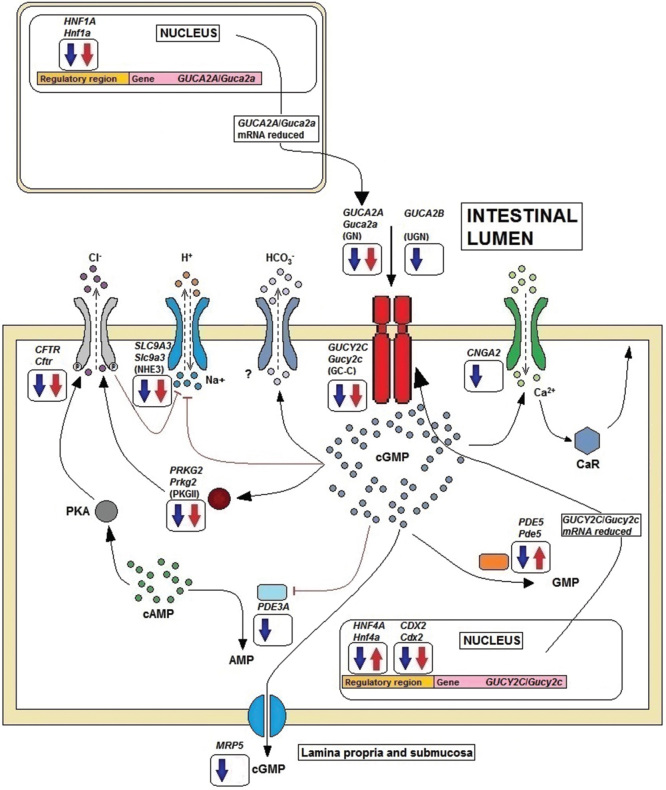Figure 4.
Proposed GC-C signaling in colitis. Direction of filled arrows in frames indicates significantly down- or up-regulated expression of genes encoding transcription factors, GC-C, GC-C ligands (GN and UGN) or cGMP downstream mediators in IBD (blue) and TNBS colitis (red). Down-regulation of transcription factors leads to reduced synthesis of GN (and UGN), which both act in a paracrine, luminocrine and autocrine manner, and reduced synthesis of GC-C, with subsequent decreased intracellular cGMP generation. Reduced cGMP and down-regulation of cGMP-dependent protein kinase II (PKGII) reduce phosphorylation of CFTR and diminish chloride efflux. In addition bicarbonate efflux through an unknown channel decreases. The ion channels CFTR and sodium-hydrogen exchanger (NHE) are also down-regulated. These processes have implications for fluid and ion homeostasis. Both lower cGMP levels and down-regulation of cyclic nucleotide-gated channels (CNG) lead to diminished calcium influx and calcium-sensing receptor (CaR) signaling, with reduced anti-proliferative effects as a consequence [38]. cGMP-dependent phosphodiesterase (PDE5) which facilitates conversion of cGMP to GMP is down-regulated in IBD and up-regulated in TNBS colitis. cGMP is transported through the basolateral cell membrane, possibly by multidrug-resistance transporter (MRP) 5. Reduced availability of cGMP in the lamina propria and submucosa could hamper inhibition of nociceptors. The figure was adapted and modified from Basu et al. and Fiskerstrand et al. [37,39].

